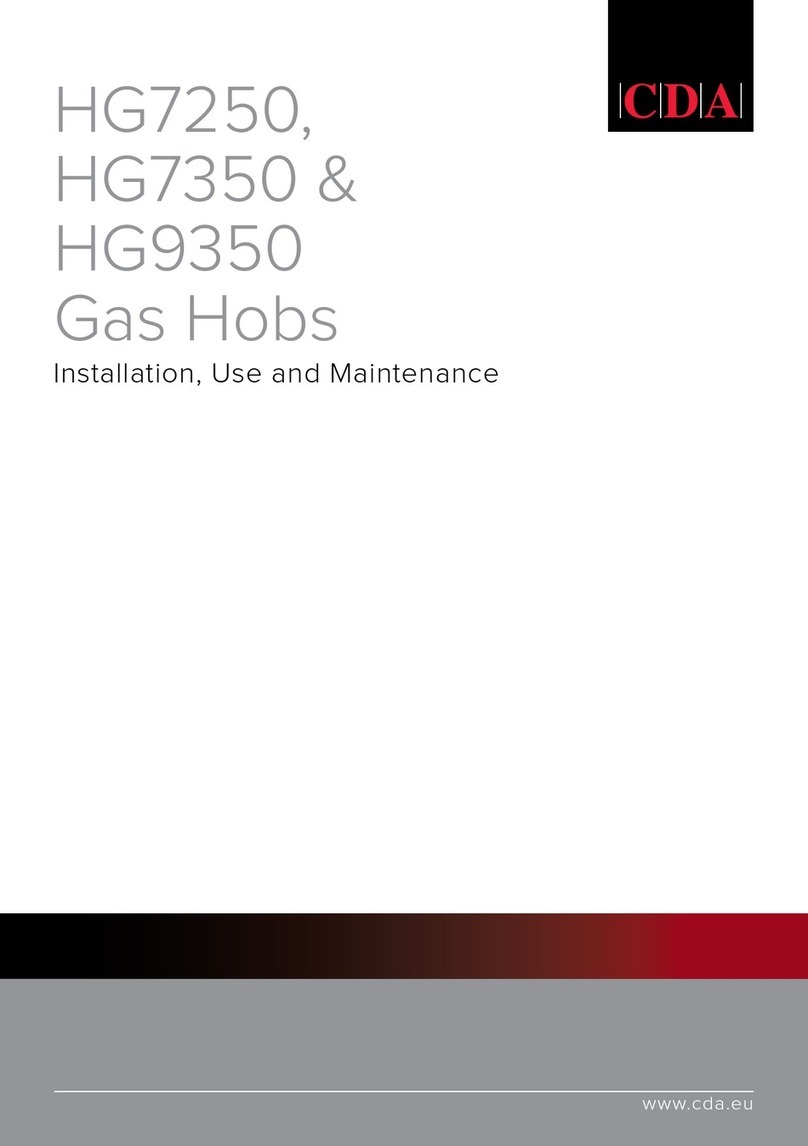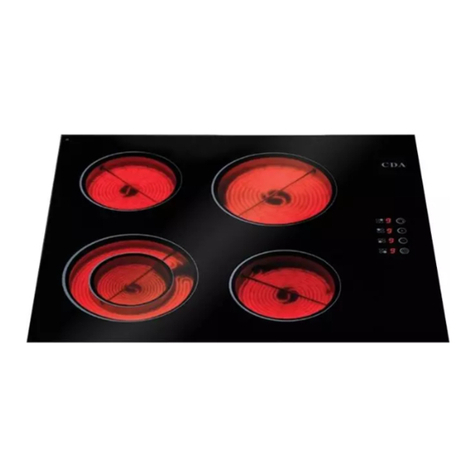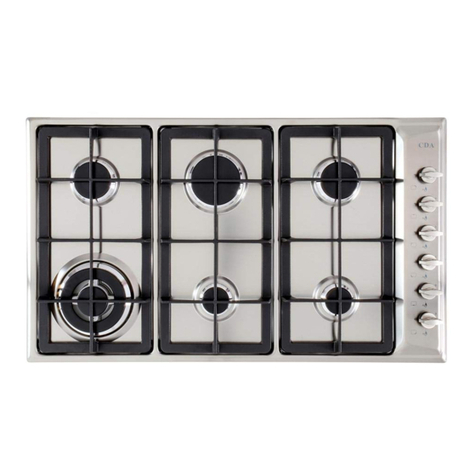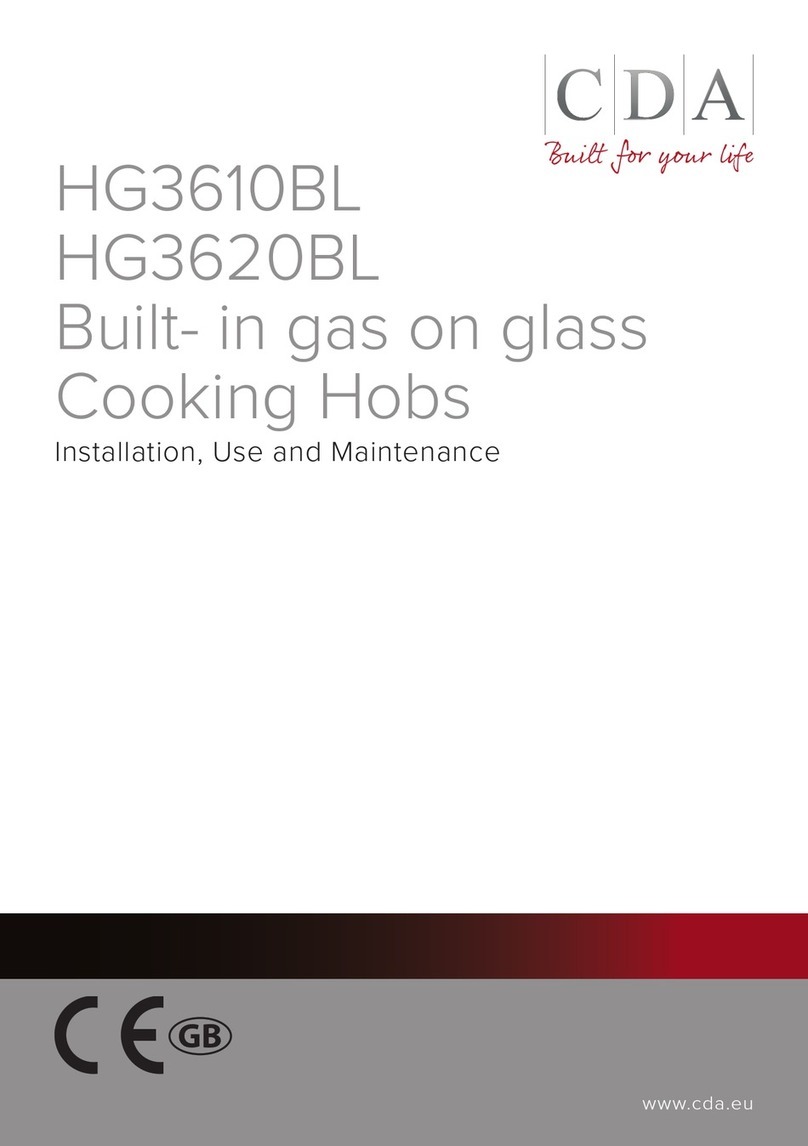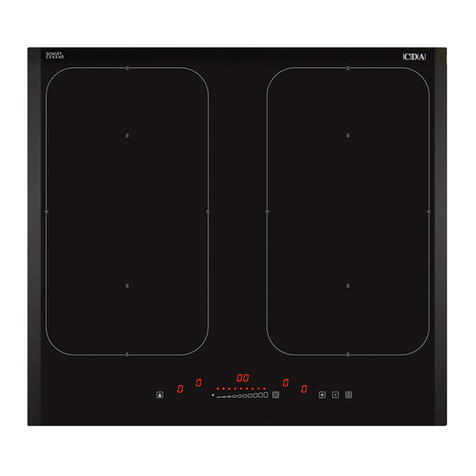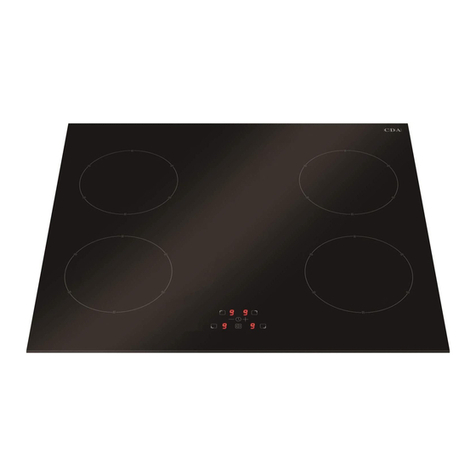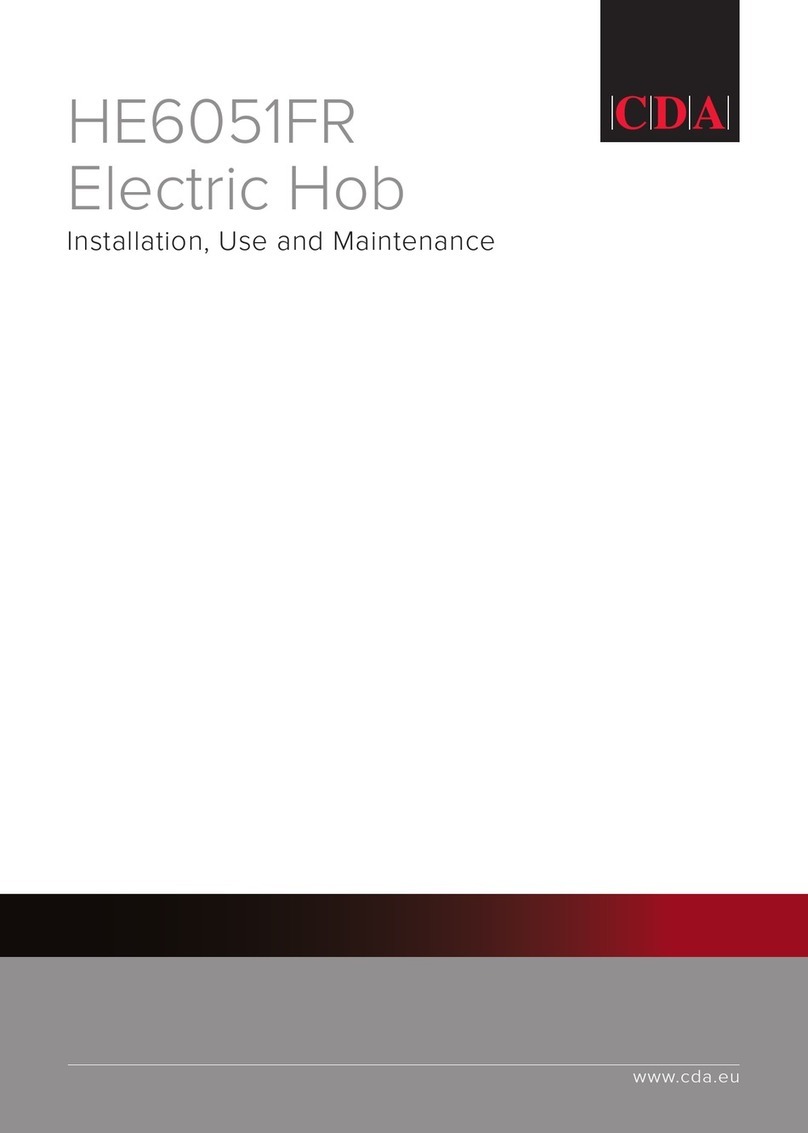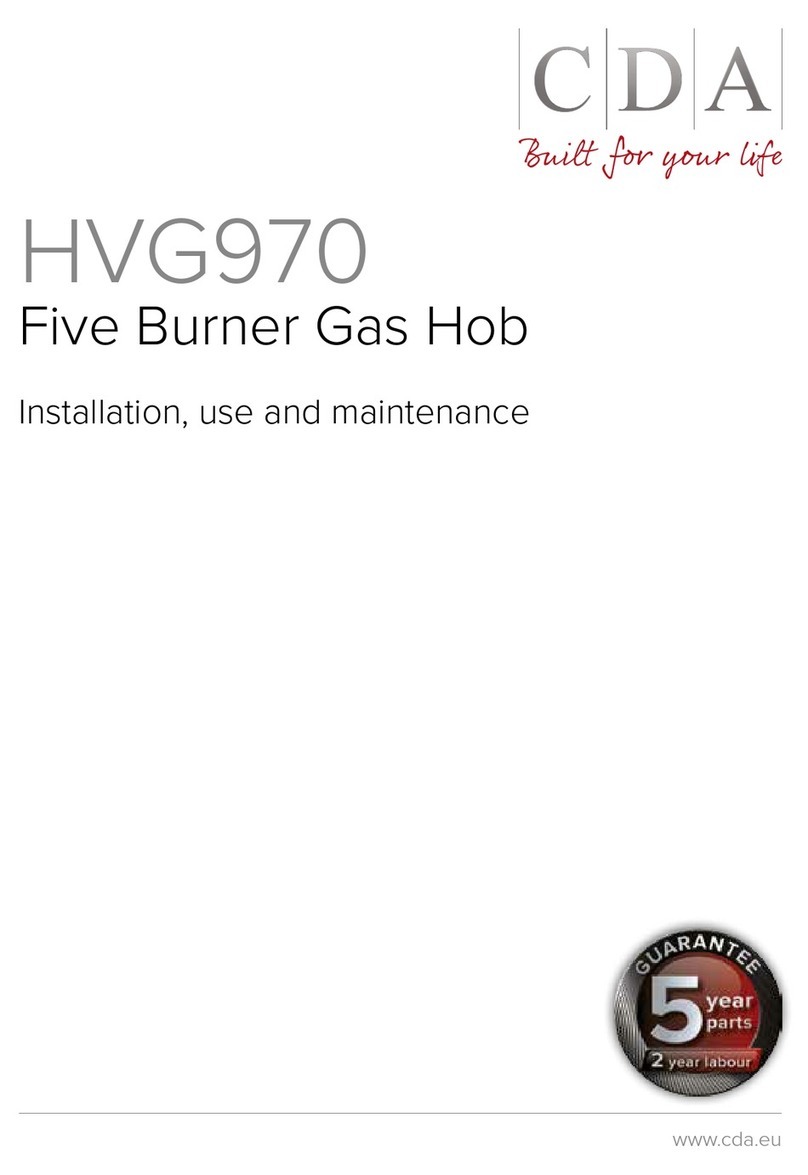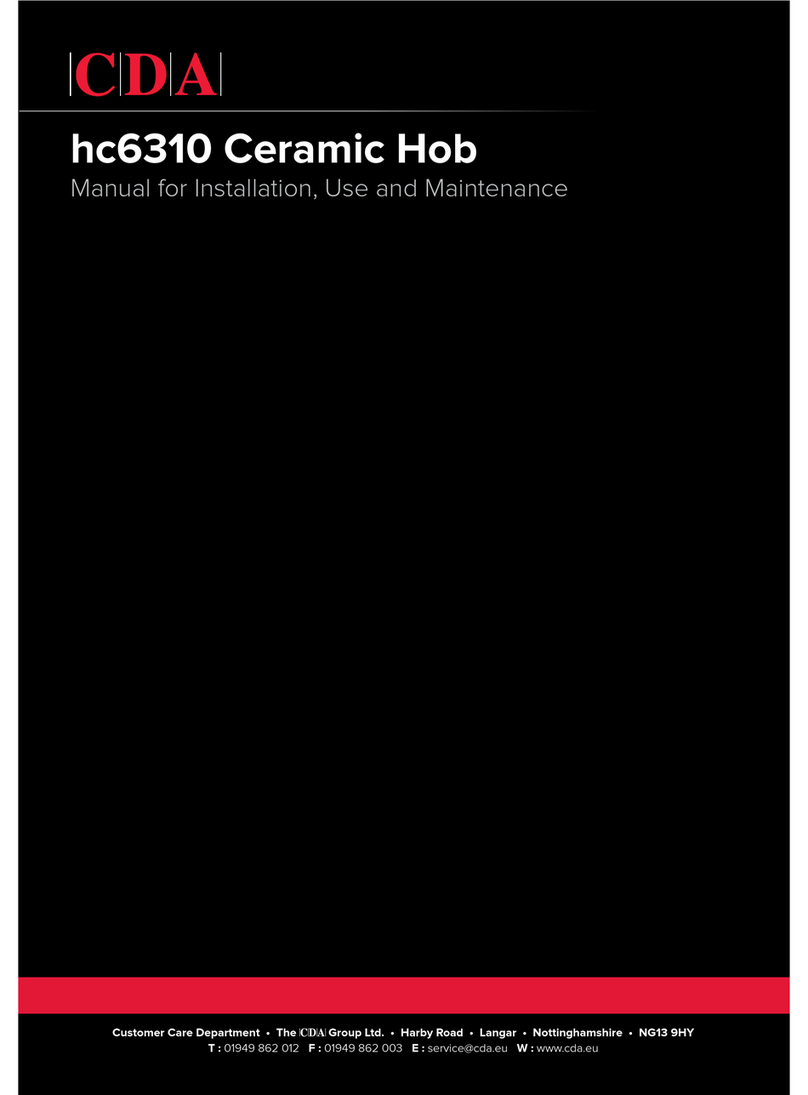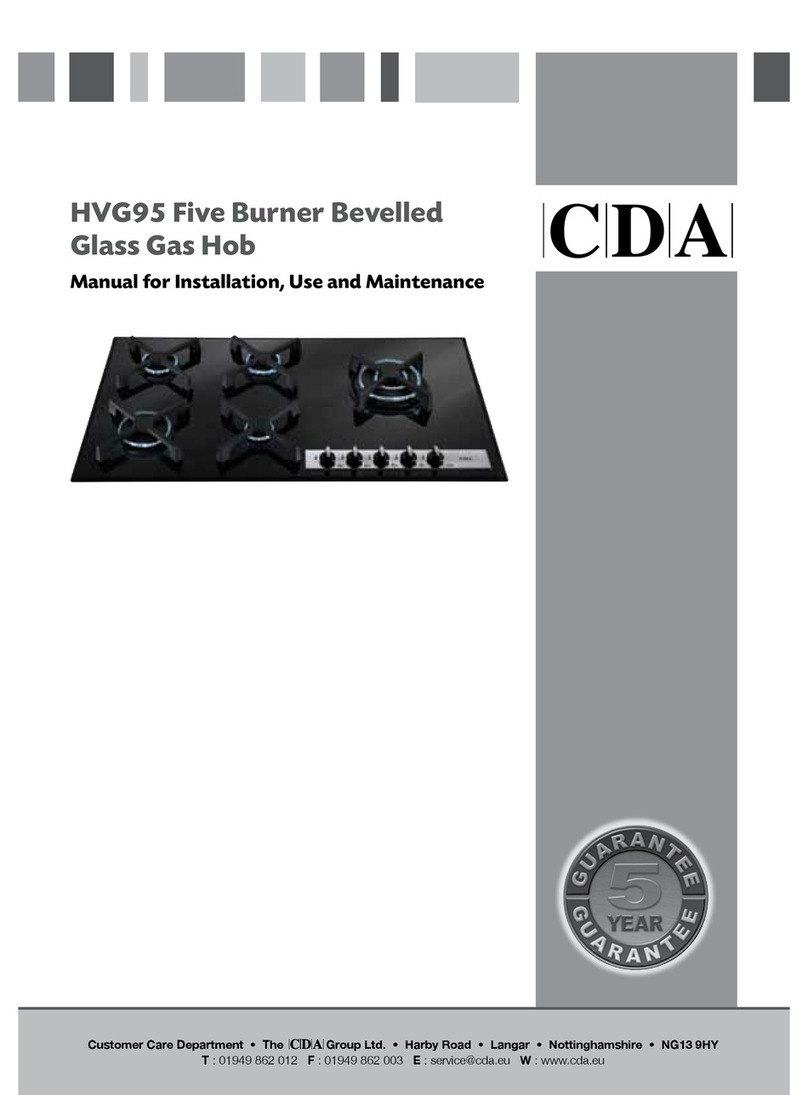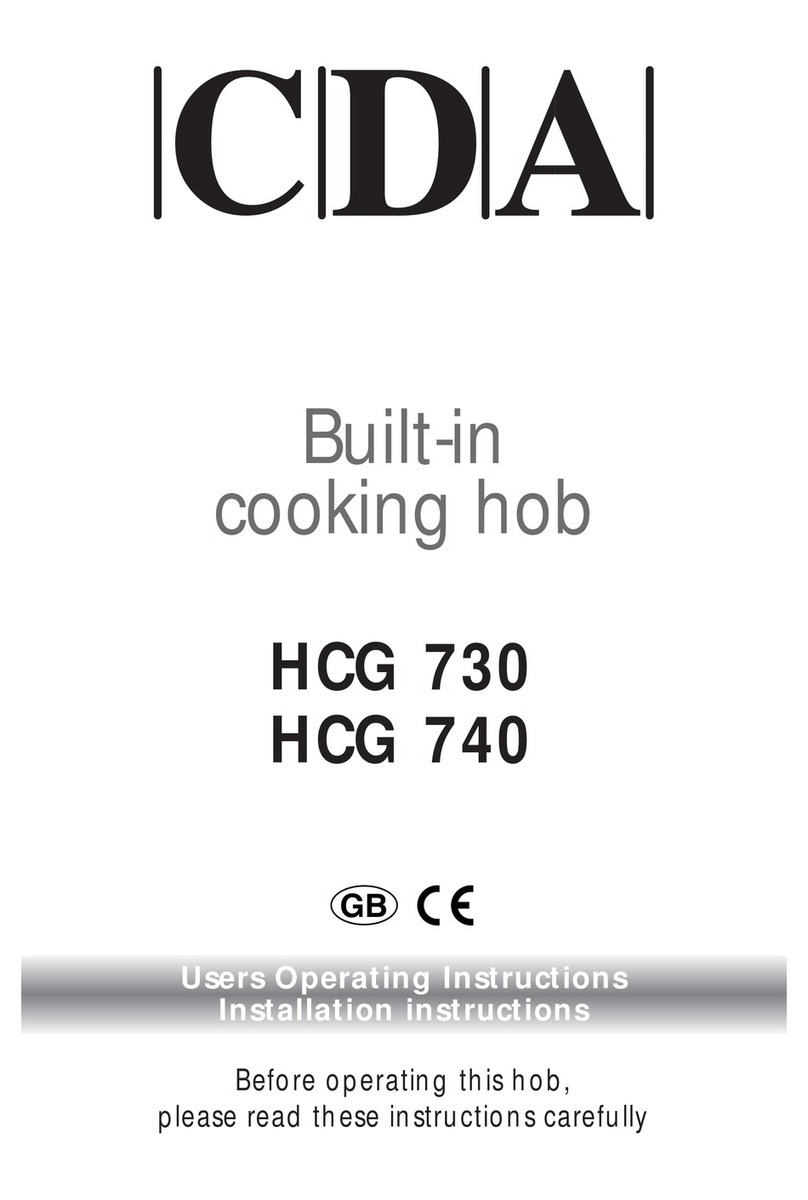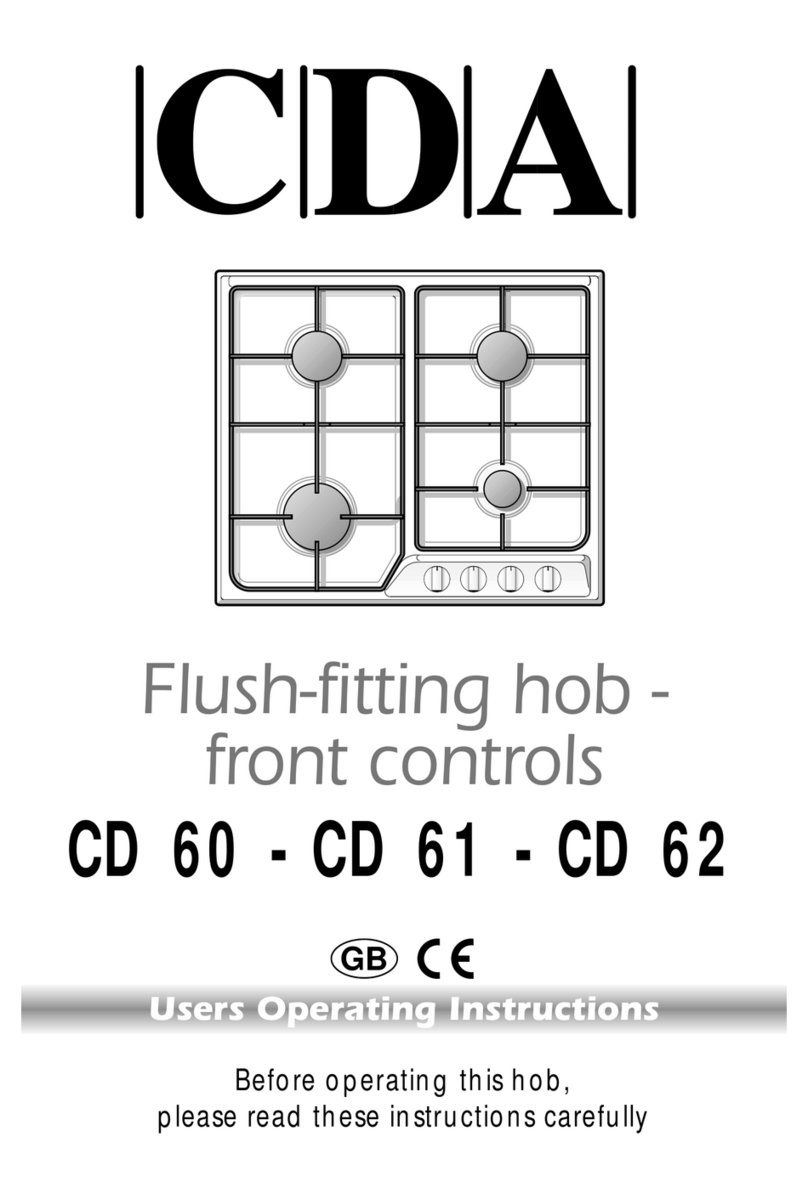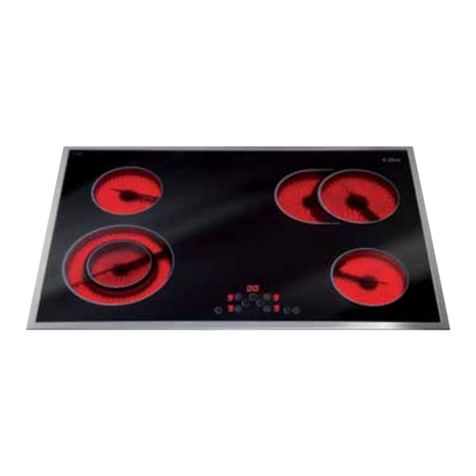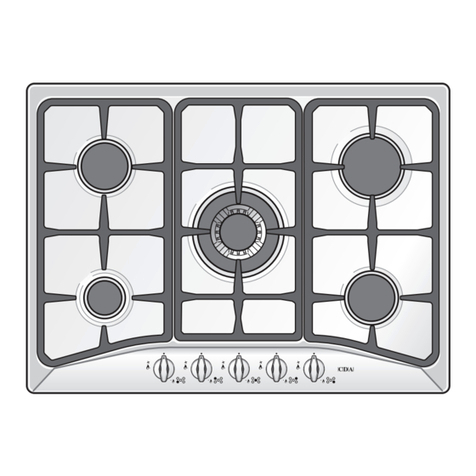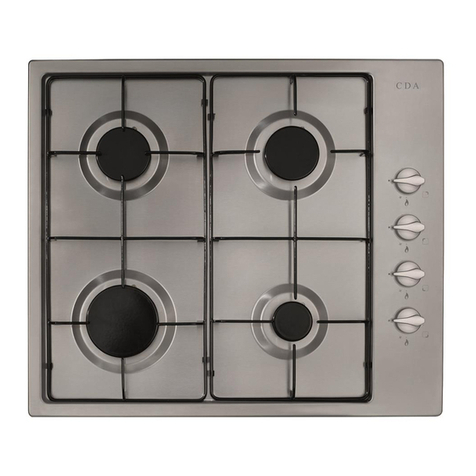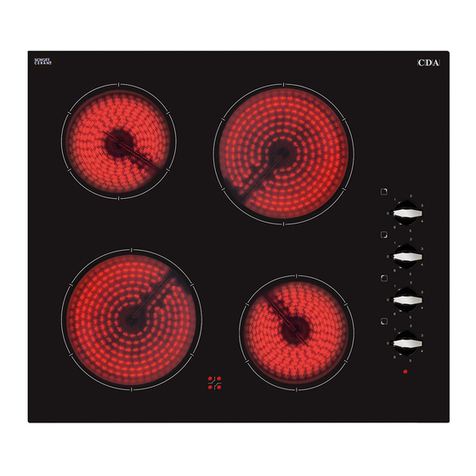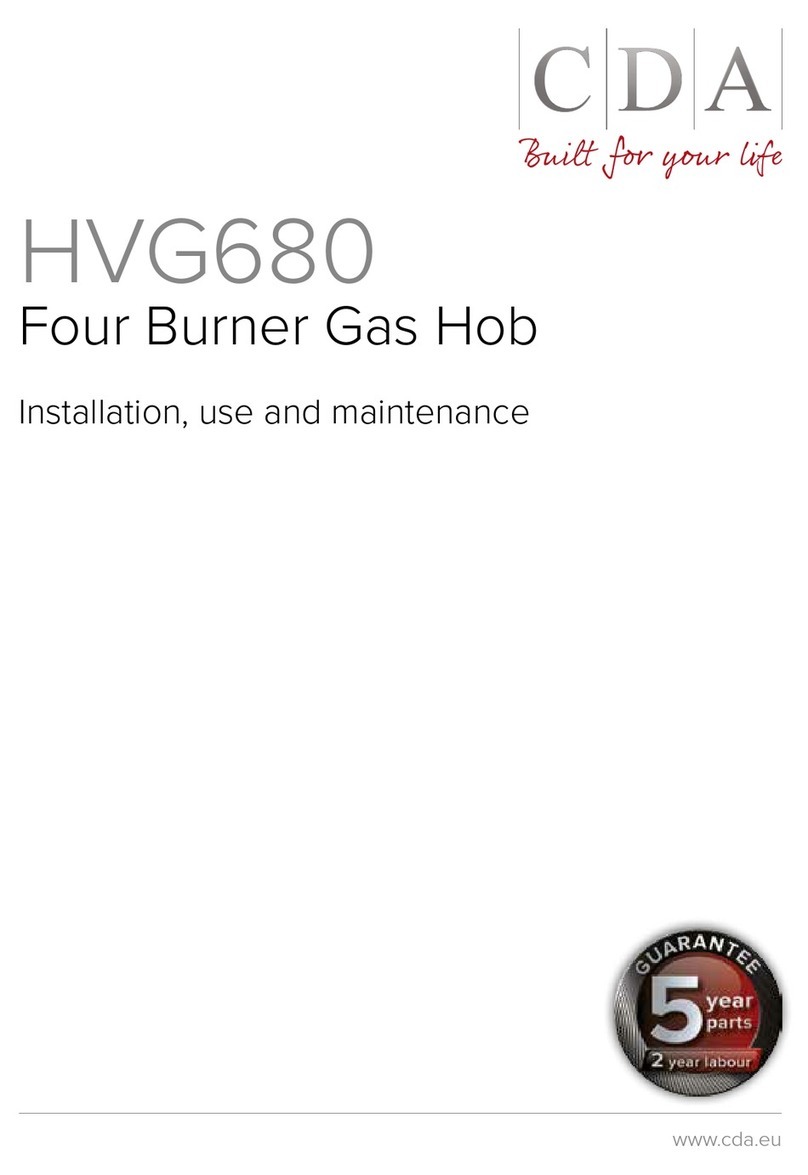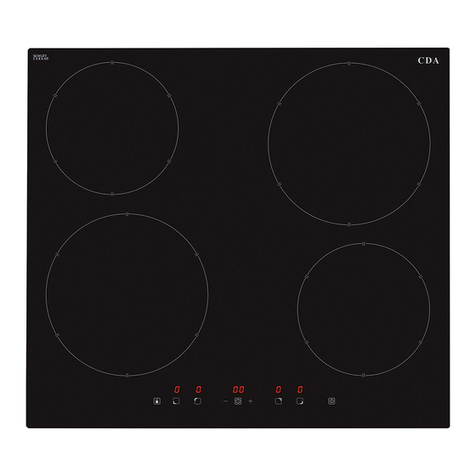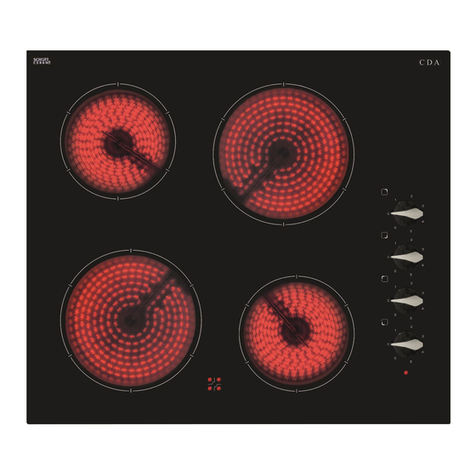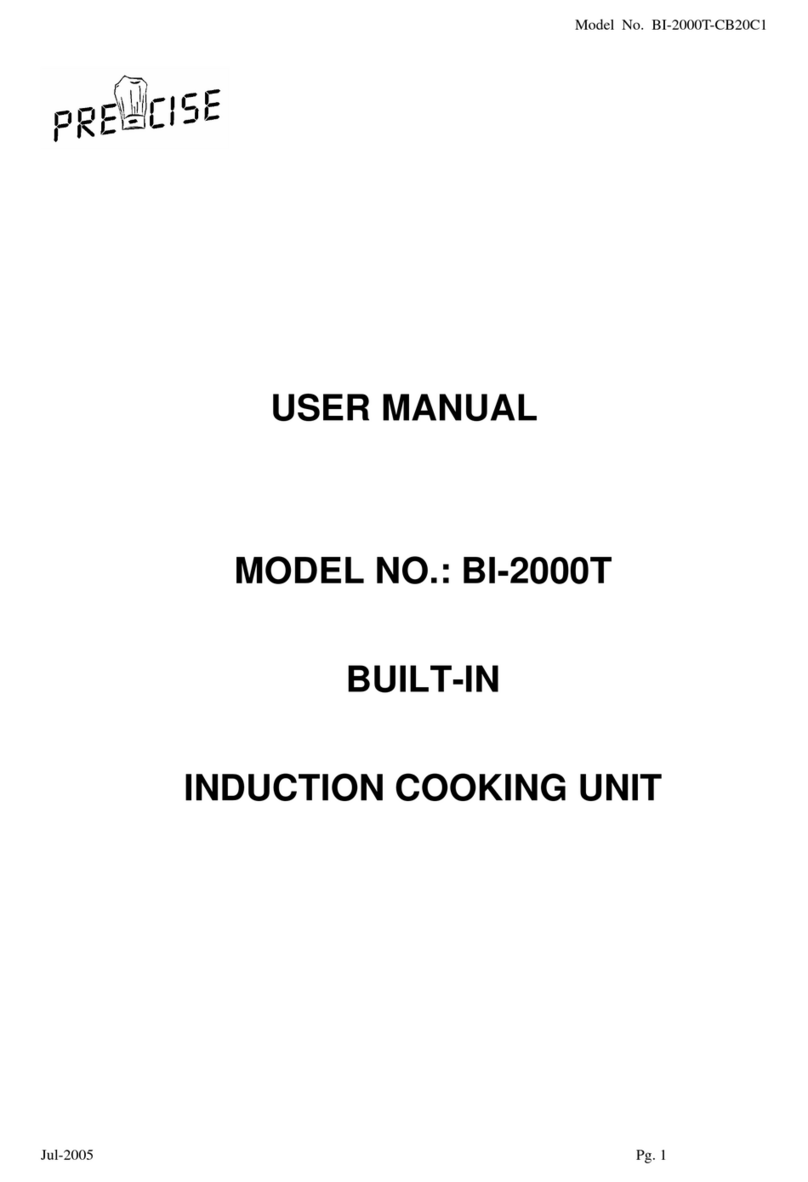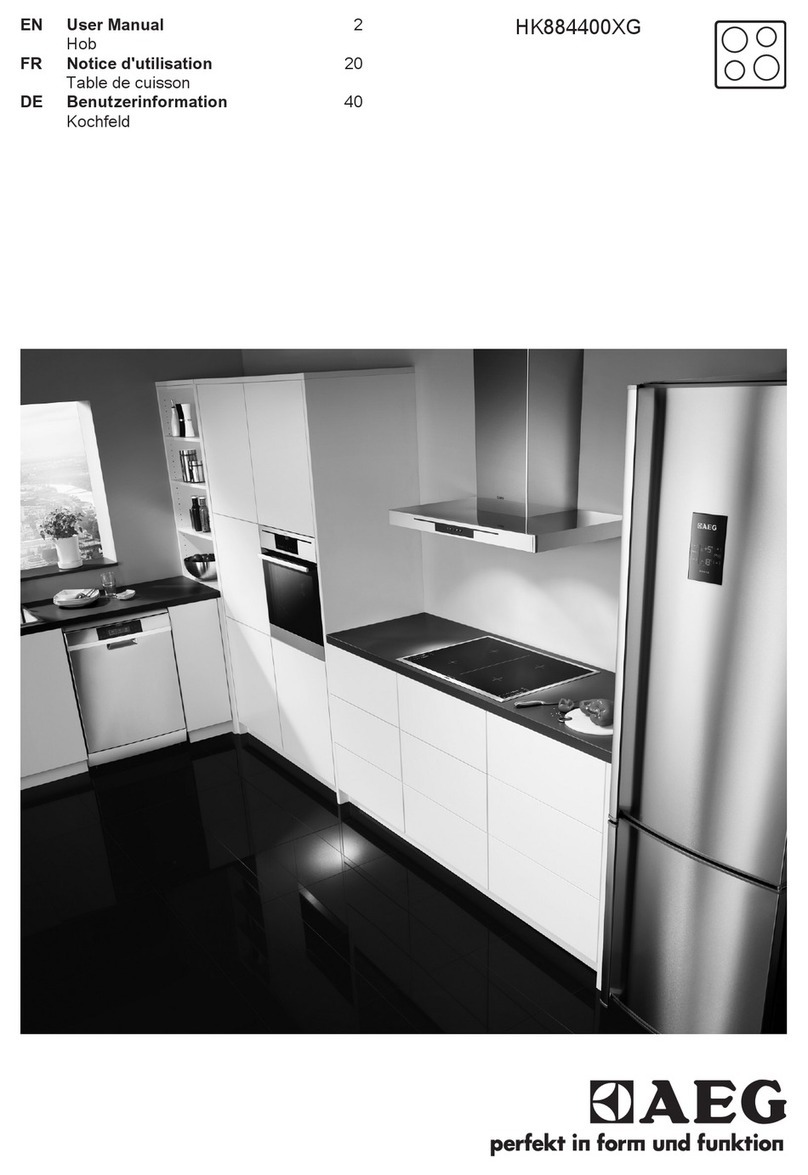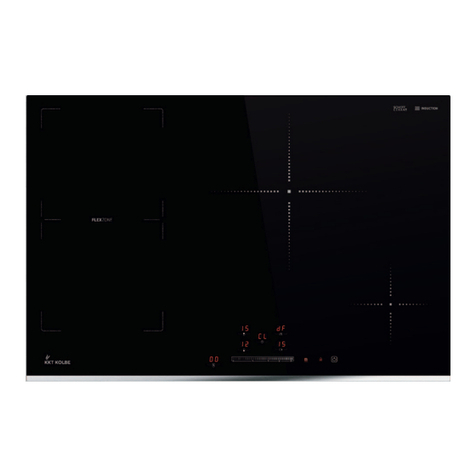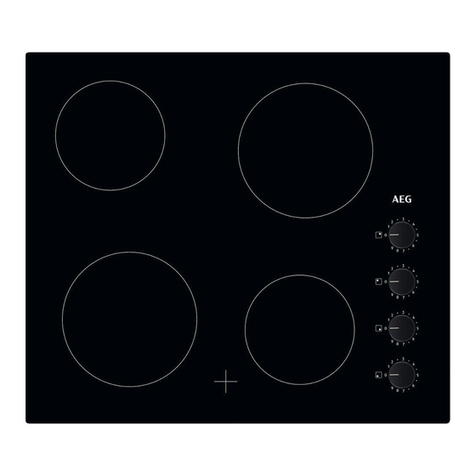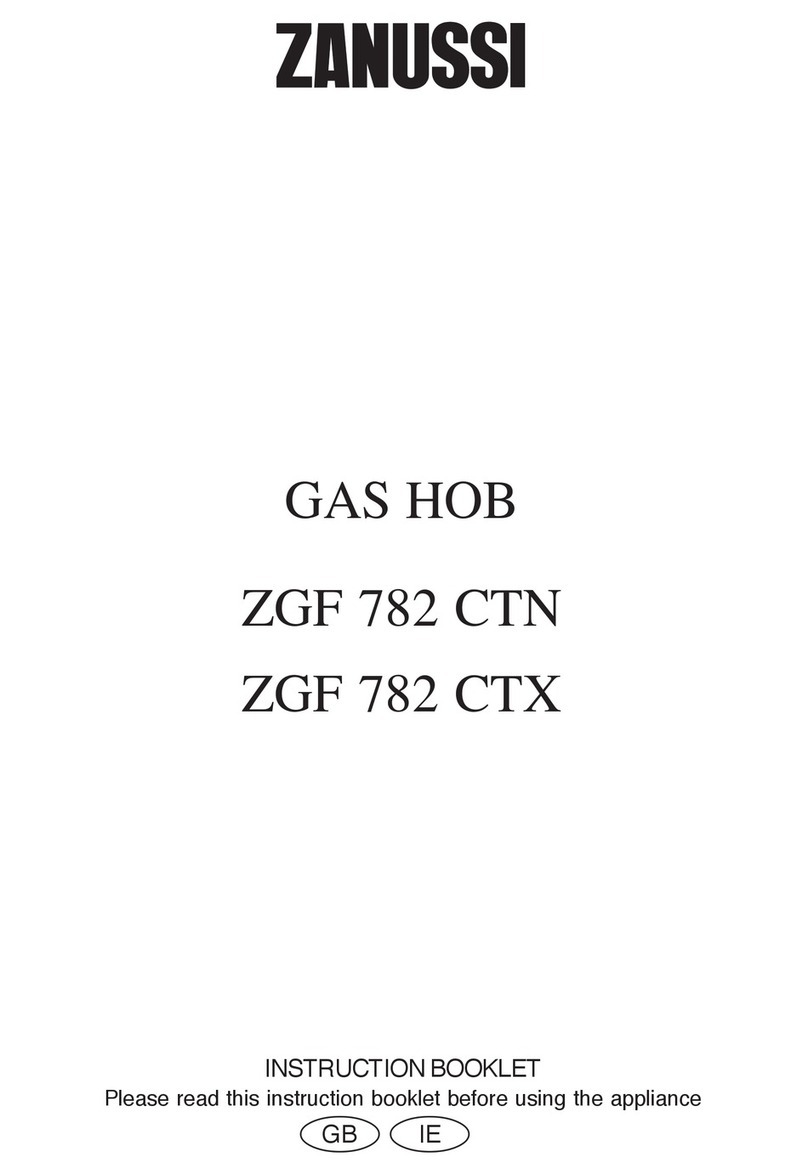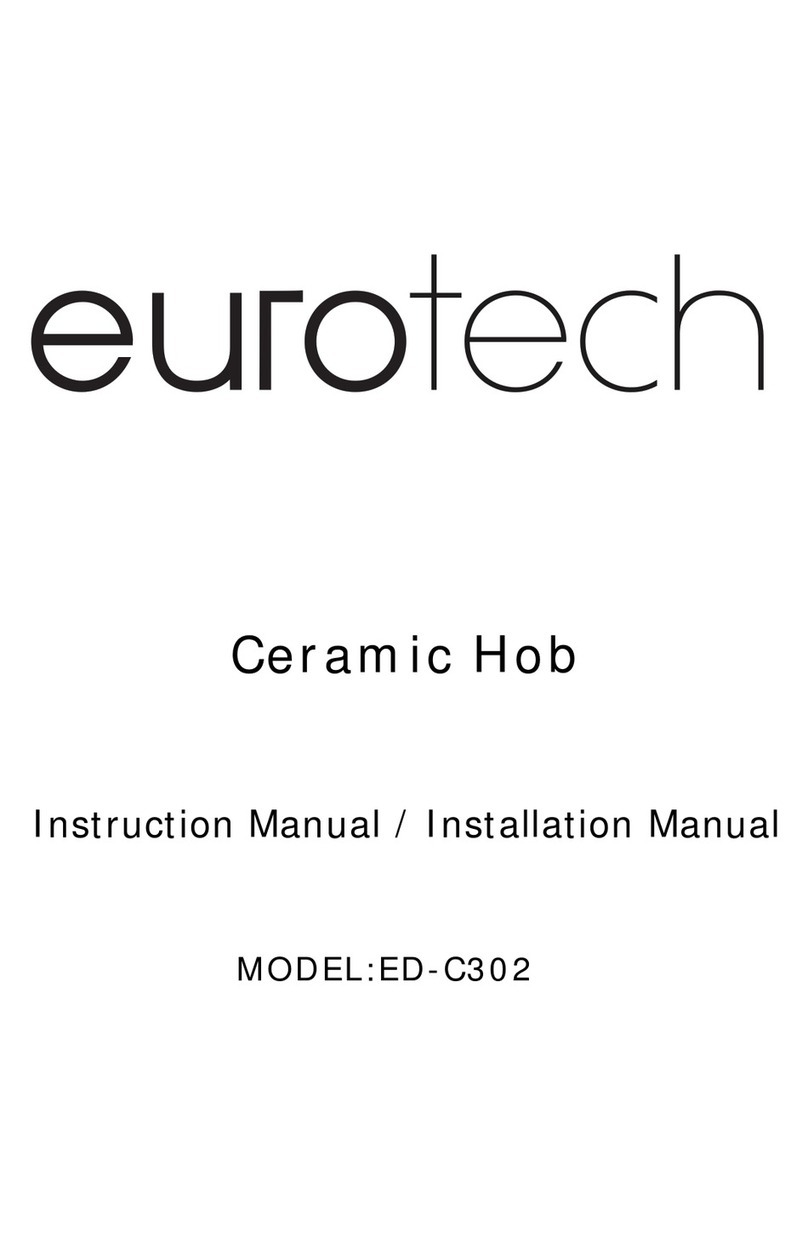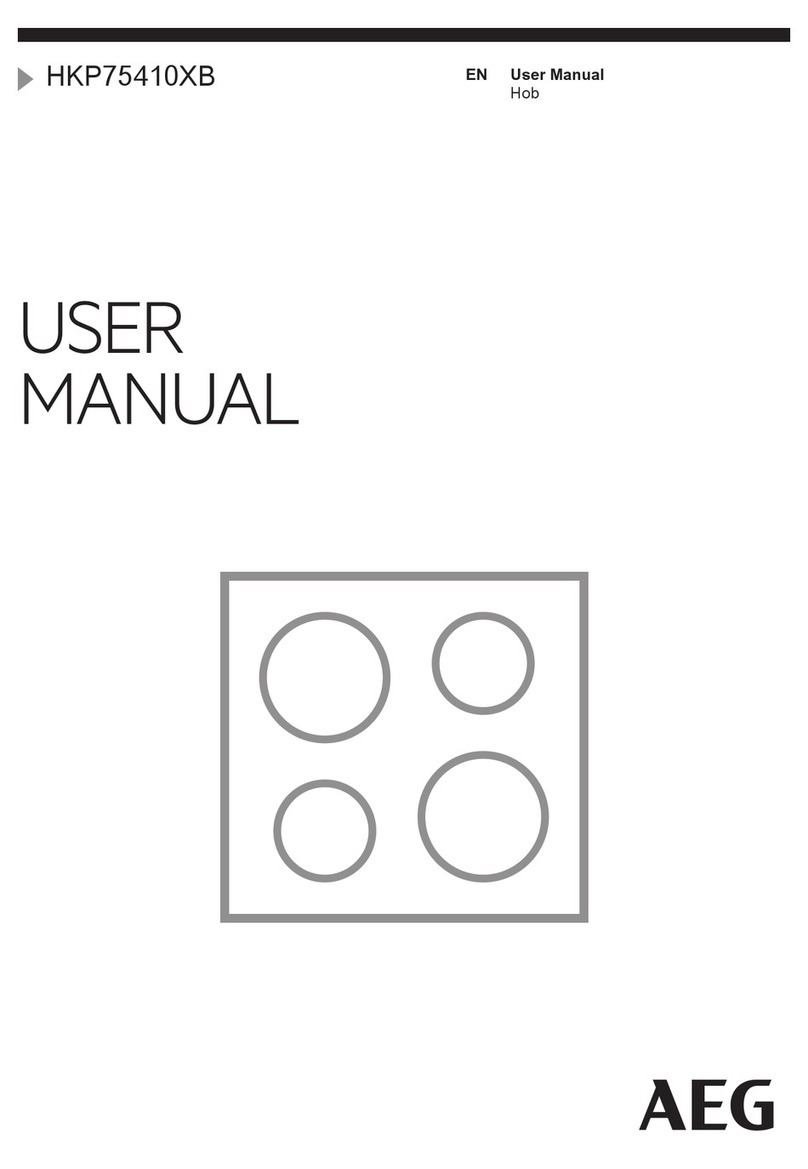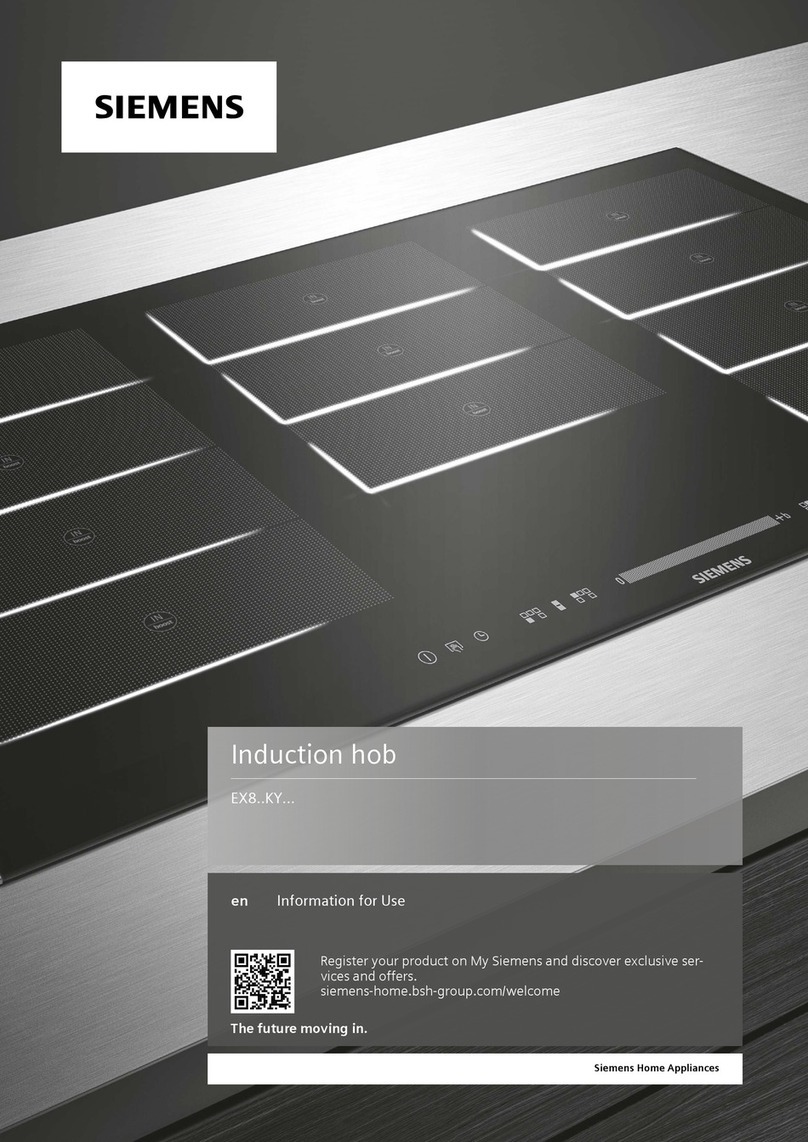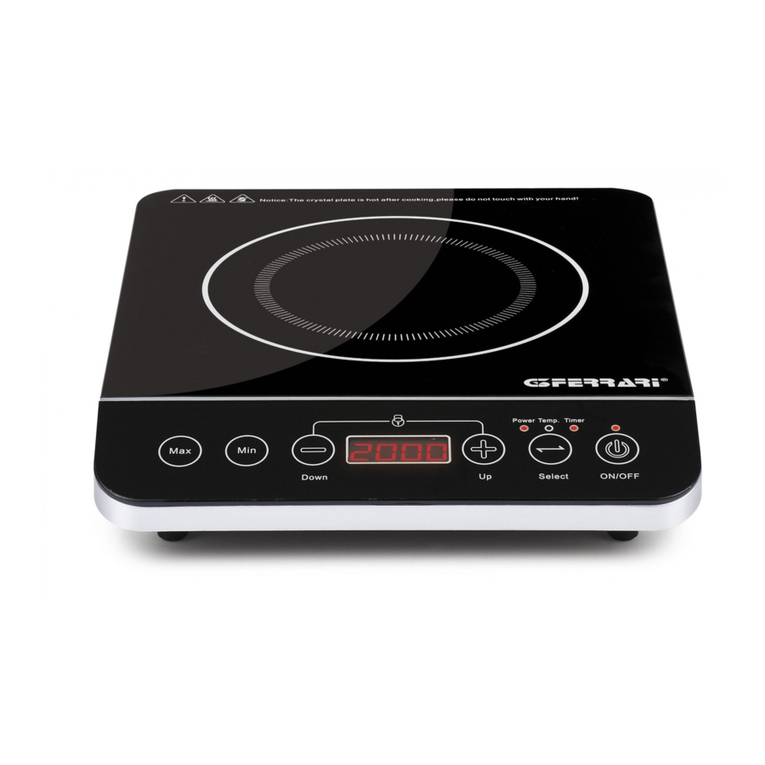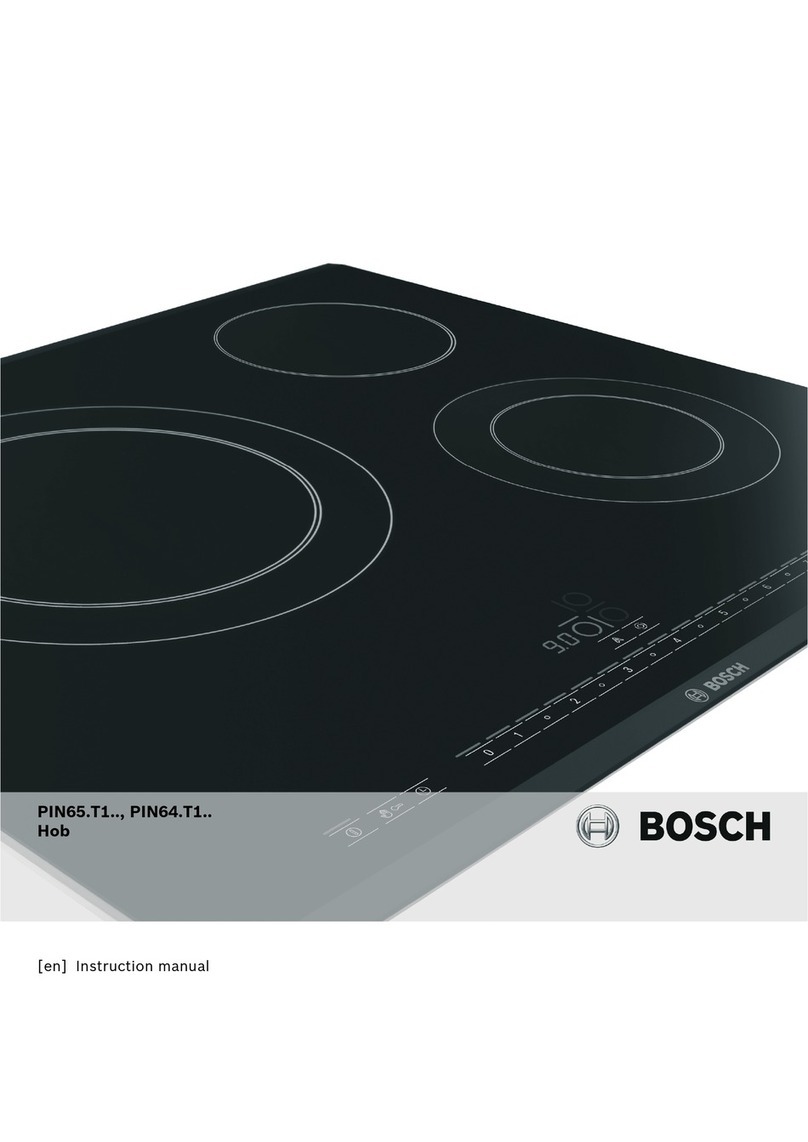
4
• CAUTION: this appIiance must only be installed in a permanently
ventilated room in compliance with the applicable regulations.
• Do not carry out cleaning or maintenance operations on the appliance
without having previously disconnected it from the electric power
supply.
• Do not use a steam cleaner because the moisture can get into the
appliance therefore making it unsafe.
• Do not cover the hob with aluminium foils.
• Do not touch the appliance with wet or damp hands (or feet).
• Do not use the appliance whilst in bare feet.
• If you should decide not to use this appliance any longer (or decide to
substitute another model), before disposing of it, it is recommended
that it be made inoperative in an appropriate manner in accordance to
health and environmental protection regulations, ensuring in particular
that all potentially hazardous parts be made harmless, especially in
relation to children who could play with unused appliances.
• The various components of the appliance are recyclable. Dispose of
them in accordance with the regulations in force in your country. If the
appliance is to be scrapped, remove the power cord.
• After use, ensure that the knobs are in the o position.
• Children less than 8 years of age shall be kept away unless continuously
supervised.
• This appliance can be used by children aged from 8 years and above
and persons with reduced physical, sensory or mental capabilities or
lack of experience and knowledge if they have been given supervision
or instruction concerning use of the appliance in a safe way and
understand the hazards involved. Children shall not play with the
appliance. Cleaning and user maintenance shall not be made by
children without supervision.
• The manufacturer declines all liability for injury to persons or damage
to property caused by incorrect or improper use of the appliance.
• WARNING: During use the appliance and its accessible parts become
hot; they remain hot for some time after use.
–Care should be taken to avoid touching heating elements on the
hob.
–To avoid burns and scalds, young children should be kept away.
• Make sure that electrical cables connecting other appliances in the
proximity of the cooktop cannot come into contact with the hob.
